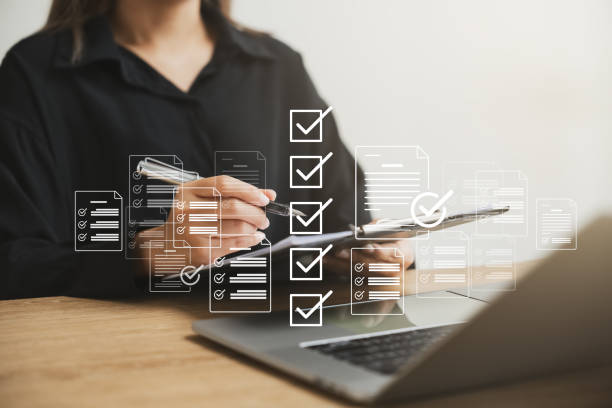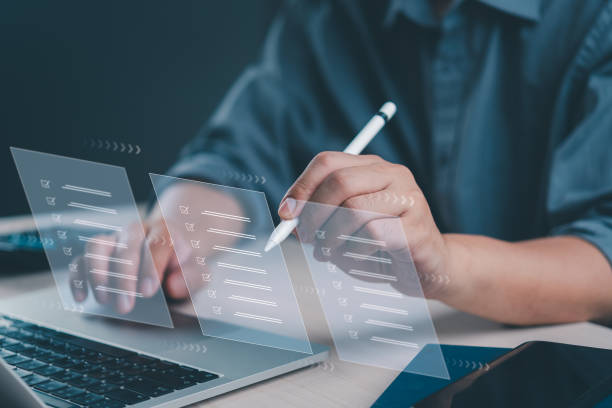What is On-Page SEO and Why is it Important?
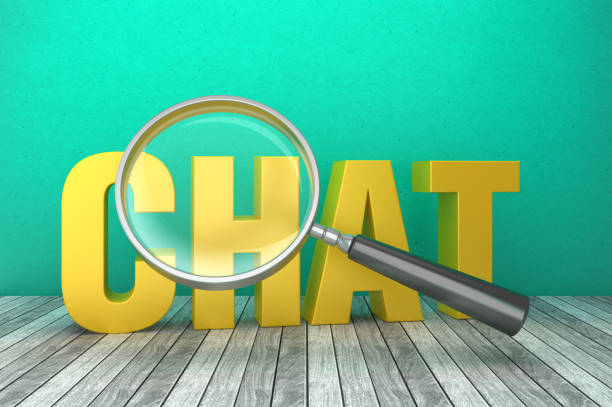
On-Page SEO refers to a set of actions you take within your website to improve its ranking in search engine results.
These actions include optimizing content, site structure, HTML tags, and other SEO-related factors.
The importance of On-Page SEO lies in the fact that it helps search engines better understand your site’s content and display it to users in search results.
Without strong On-Page SEO, even the best content might get lost among a multitude of websites and go unnoticed.
On-Page SEO plays a vital role in attracting organic traffic to your site.
Organic traffic refers to visitors who come to your site through search engines and typically have higher conversion rates.
To better understand #On-Page_SEO, imagine your website is a store.
On-Page SEO is like properly arranging shelves, appropriately labeling products, and providing complete and accurate information to customers.
The more organized and appealing your store is, the more customers you attract, and the higher their likelihood of purchasing.
On-Page SEO does exactly the same for your website, making it more attractive to search engines and users.
Are you tired of losing business opportunities due to not having a professional corporate website?
Rasawab, with professional corporate website design, helps you:
✅ Build a powerful and reliable brand image
✅ Convert website visitors into loyal customers
⚡ Get a free consultation right now!
Keyword Research and Choosing the Best Ones
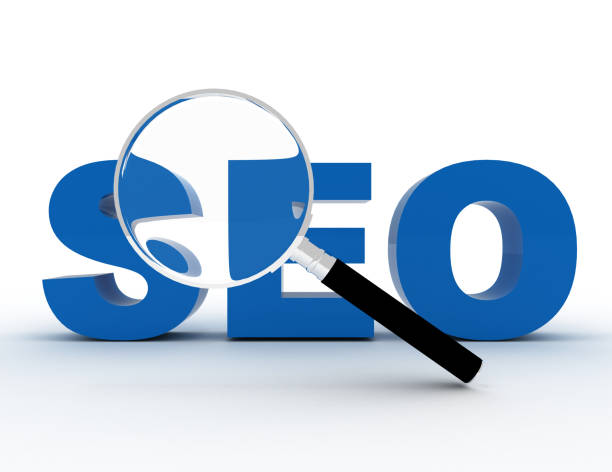
Keyword research is one of the most important steps in On-Page SEO.
First and foremost, you need to know what words users are searching for in search engines to find your products or services.
Various tools are available for keyword research, including Google Keyword Planner, Ahrefs, Semrush, and Moz Keyword Explorer.
These tools help you find keywords related to your business and check their search volume, competition level, and other important information.
When choosing keywords, pay attention to two points: 1- Relevance to your site’s content and 2- Appropriate search volume.
Keywords must be precisely relevant to your site’s content so that search engines can understand the connection between the content and the keywords.
Additionally, keywords should have an appropriate search volume to attract significant organic traffic to your site.
Using Long-Tail Keywords can also be very effective.
Long-tail keywords usually have lower search volume, but their competition is also lower, and the probability of ranking higher in search results is greater.
Furthermore, long-tail keywords are typically more specific and relevant to user needs, and they have higher conversion rates.
For example, instead of using the keyword “shoes,” you can use the keyword “buy men’s running sports shoes.”
Finally, compile a list of selected keywords and categorize them based on their importance and relevance to your site’s content.
This list will help you effectively use keywords and optimize your site’s content in subsequent On-Page SEO steps.
Optimizing Titles and Meta Descriptions

Titles (Title Tags) and Meta Descriptions are two important elements in On-Page SEO that are displayed in search engine results.
Titles are the main title of the page, and meta descriptions provide a summary of the page’s content.
Optimizing these two elements can have a significant impact on your click-through rate (CTR) and site ranking.
Titles should be attractive, relevant, and contain the main keyword.
Titles should not exceed 60 characters to be fully displayed in search results.
Meta descriptions should also be engaging, concise, and contain the main keyword.
Meta descriptions should not exceed 160 characters.
Meta descriptions should entice users to click on your site’s link and visit the site.
For example, you can use phrases like “special discount,” “free shipping,” or “free consultation” in your meta descriptions.
Using a Call to action in meta descriptions can also be effective.
Title tags and meta descriptions are very important for SEO.
Google uses this information to understand the page’s topic and rank it.
Ensure that each page has a unique and appealing title tag and a compelling meta description that provides an accurate summary of the page’s content.
| Element | Description | Example |
|---|---|---|
| Title | Page title in search results | Buy Men’s Sports Shoes with Special Discount |
| Meta Description | Summary of page content in search results | Best men’s sports shoes at affordable prices with free shipping. Shop now! |
Content Optimization and Keyword Usage

Content is king! This famous phrase in the world of SEO means that high-quality and valuable content is the most important factor in attracting organic traffic and improving site ranking.
To optimize content, you need to pay attention to several points.
Firstly, the content must be original and unique.
Avoid copying others’ content and try to provide new and useful content for users.
Secondly, the content must be relevant to the chosen keywords.
Use keywords naturally and intelligently in the text, but avoid overusing keywords (Keyword Stuffing).
Thirdly, the content must be readable and engaging.
Use short paragraphs, simple sentences, and attractive images and videos to keep users on your site.
Using keywords in titles, subtitles, the first and last paragraphs, and image alternative text (Alt Text) can help improve your site’s ranking.
But most importantly, your content must be useful and valuable to users.
If users are satisfied with your content, their likelihood of returning to your site increases, and your site’s ranking also improves.
Google rewards websites that provide high-quality and valuable content by placing them higher in search results.
Don’t forget that On-Page SEO requires continuous analysis and review.
You should regularly review your site’s performance and make necessary changes if needed.
Did you know that customers’ first impression of your company is your website? With a powerful corporate website from Rasawab, multiply your business credibility!
✅ Custom and eye-catching design tailored to your brand
✅ Improved user experience and increased customer attraction
⚡ Get a free consultation!
Optimizing Images and Videos
![]()
Images and videos can significantly impact user engagement and interaction with your site.
But for images and videos to help your site’s SEO, you need to optimize them.
Firstly, reduce the size of images and videos to increase page loading speed.
Use image and video compression tools to reduce file sizes without compromising quality.
Secondly, use descriptive file names for images and videos.
Instead of using default file names like IMG_1234.jpg, use descriptive file names like men’s-sports-shoes.jpg.
Thirdly, use alternative text (Alt Text) for images.
Alt text helps search engines understand the image content and display it in search results.
Alt text should be descriptive, concise, and contain the main keyword.
Fourthly, use videos on your site.
Videos can increase your site’s organic traffic and reduce the bounce rate.
Upload videos to your site and use video sharing platforms like YouTube and Vimeo to share your videos.
By following these tips, you can optimize your images and videos and help your site’s SEO.
On-Page SEO should be continuous and adapt to changes in Google’s algorithms.
URL Structure Optimization
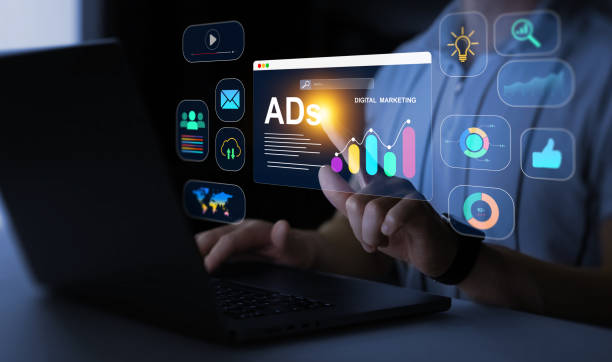
Your site’s URL structure plays an important role in On-Page SEO.
Your site’s URLs should be short, descriptive, and contain the main keyword.
Avoid using long and complex URLs.
Your site’s URLs should be easily understandable by users and search engines.
Use hyphens (-) to separate words in the URL.
Avoid using uppercase letters, numbers, and special characters in your URL.
For example, instead of using a URL like example.com/page?id=123, use a URL like example.com/men’s-sports-shoes.
Your site’s URL structure should be logical and hierarchical.
URLs of related pages should be placed in a single branch.
This helps users and search engines better understand your site’s structure.
For example, if your site is an online store, you can use a URL structure like example.com/category/product.
Optimizing the URL structure is one of the most important steps in On-Page SEO that can significantly impact your site’s ranking.
The importance of SEO in business prosperity is clear to everyone.
So start optimizing your site today.
Improving Page Loading Speed

Page loading speed is an important ranking factor in Google.
Users expect web pages to load quickly.
If your page loads slowly, users will leave your site and go to other sites.
Google also rewards websites with high loading speeds by placing them higher in search results.
To improve page loading speed, you need to pay attention to several points.
Firstly, reduce the size of images and videos.
Secondly, use a CDN (Content Delivery Network) to distribute your site’s content across various servers worldwide.
Thirdly, use caching to store your site’s pages in users’ browser memory.
Fourthly, optimize your site’s HTML, CSS, and JavaScript code.
Your site’s HTML, CSS, and JavaScript code should be clean, concise, and efficient.
Avoid removing redundant and unnecessary code.
By following these tips, you can improve your page loading speed and increase your site’s ranking on Google.
On-Page SEO helps you attract more traffic to your site and boost your business.
| Factor | Description | Solution |
|---|---|---|
| Image Size | Large images slow down loading speed. | Compress images without losing quality |
| CDN | Content distribution across various servers | Use CDN |
| Cache | Storing pages in the browser | Enable caching |
Using Internal and External Links
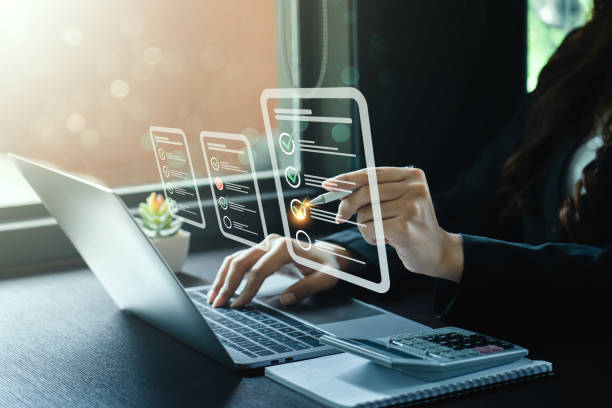
Internal and external links play an important role in On-Page SEO.
Internal links refer to links that point from one page of your site to another page on your site.
External links refer to links that point from your site to other sites or from other sites to your site.
Internal links help search engines better understand your site’s structure and identify important pages on your site.
Internal links also help users easily navigate your site and access the information they need.
External links show search engines that your site is authoritative and trustworthy.
External links can also increase your site’s organic traffic.
However, you should note that external links should be from reputable sites relevant to your site’s topic.
Linking to low-quality and irrelevant sites can harm your site’s ranking.
Using internal and external links is one of the most important steps in On-Page SEO that can significantly impact your site’s ranking.
Additionally, internal linking helps guide users to different parts of the site.
Does your current corporate website present a worthy image of your brand and attract new customers?
If not, turn this challenge into an opportunity with Rasawab’s professional corporate website design services.
✅ Significantly improves your brand’s credibility and image.
✅ Paves the way for attracting new leads and customers.
⚡ For a free and expert consultation, contact Rasawab right now!
Mobile Optimization

Today, more than half of web traffic comes from mobile devices.
Therefore, optimizing your site for mobile is one of the most essential steps in On-Page SEO.
Your site must be responsive, meaning it automatically adapts to the screen size of various devices.
Your site should load quickly on mobile devices.
Your site should have a simple and user-friendly design so that users can easily navigate your site.
Google rewards websites that are optimized for mobile by placing them higher in search results.
Mobile optimization is one of the most important steps in On-Page SEO that can significantly impact your site’s ranking.
Ignoring this important point can cause irreparable damage to your business.
On-Page SEO is an ongoing process that requires effort and patience.
But by following the tips mentioned in this article, you can improve your site’s ranking on Google and increase your organic traffic.
Monitoring and Analyzing Results

After implementing On-Page SEO actions, you need to monitor and analyze the results to see if these actions have been effective.
Various tools are available for monitoring and analyzing SEO results, including Google Analytics, Google Search Console, Ahrefs, and Semrush.
Using these tools, you can review your site’s organic traffic, keyword rankings, bounce rate, user dwell time on the site, and other important information.
Analyzing this information helps you identify your site’s strengths and weaknesses and make necessary changes if needed.
Regularly review your site’s performance and make necessary changes if needed.
On-Page SEO is an ongoing process that requires effort and patience.
But by monitoring and analyzing the results, you can ensure that your On-Page SEO actions are effective and help improve your site’s ranking.
Optimizing a site for search engines is only possible with the right strategy and its correct implementation.
So proceed with a plan and be patient.
Frequently Asked Questions
| No. | Question | Answer |
|---|---|---|
| 1 | What is On-Page SEO? | On-Page SEO refers to a set of actions taken within a website to optimize its pages to achieve a better ranking in search results. |
| 2 | What is the most important factor in On-Page SEO? | High-quality, relevant, and comprehensive content that addresses user needs is the most important factor in On-Page SEO. |
| 3 | What role does the Title Tag play in On-Page SEO? | The title tag is one of the most important factors that tells search engines and users what the page’s content is about. It should include the main keyword and be engaging. |
| 4 | How important is the Meta Description tag? | Although it does not directly affect ranking, it is highly effective in the click-through rate (CTR) in search results and encourages users to visit the page. |
| 5 | How is image optimization done in On-Page SEO? | By using appropriate alt tags, compressing image size to increase loading speed, and meaningfully naming the image file. |
| 6 | What is the importance of using headings (H1, H2, H3) in On-Page SEO? | Headings help structure content, increase readability, and assist search engines in understanding the hierarchy and sub-topics of the content. |
| 7 | What does Internal Linking mean and what are its benefits? | Internal linking means creating links between different pages of a website. This helps distribute authority, improve user navigation, and assist search engine crawling. |
| 8 | Where should the Focus Keyword be placed on the page? | The main keyword should be placed in the title tag, meta description, H1, first paragraph, naturally throughout the text, and if possible, in the URL. |
| 9 | What effect does copied or duplicate content have on On-Page SEO? | Duplicate content can harm a site’s ranking and confuse search engines as to which version is original, potentially leading them to flag it as spam. |
| 10 | How important is page loading speed in On-Page SEO? | Page loading speed is an important ranking factor and directly impacts user experience. Slow pages lead to an increased bounce rate for users. |
And other services of Rasawab Advertising Agency in the field of advertising
- Smart Marketing Automation: An effective tool to increase website traffic by utilizing real data.
- Smart Digital Branding: An effective tool to attract customers through attractive user interface design.
- Smart UI/UX: An effective tool to increase website traffic through marketing automation.
- Smart Content Strategy: A combination of creativity and technology for campaign management using real data.
- Smart Customer Journey Map: A combination of creativity and technology for analyzing customer behavior through user experience customization.
And more than hundreds of other services in the field of internet advertising, advertising consulting, and organizational solutions
Internet Advertising | Advertising Strategy | Advertorial
Resources
Introduction to On-Page SEO and Its Importance
10 Key Tips for Improving Site On-Page SEO
Content Optimization Guide for Better Ranking
Technical Factors Affecting On-Page SEO and Site Ranking
? For your business to leap forward in the digital world, Rasawab Afarin Digital Marketing Agency, specializing in responsive website design and providing comprehensive digital marketing solutions, is always by your side to help you reach the pinnacle of success.
📍 Tehran, Mirdamad Street, next to Bank Markazi, Kazeroun Jonoubi Alley, Ramin Alley, No. 6

